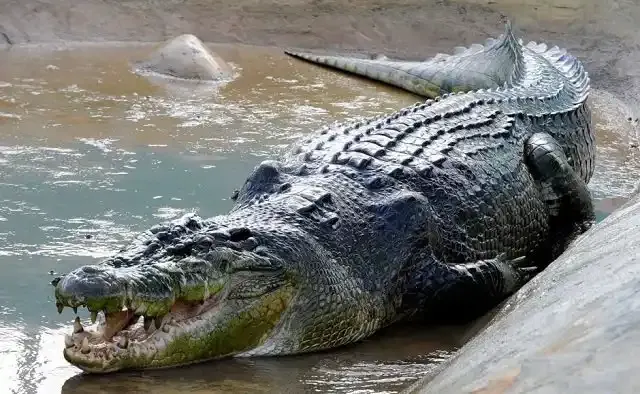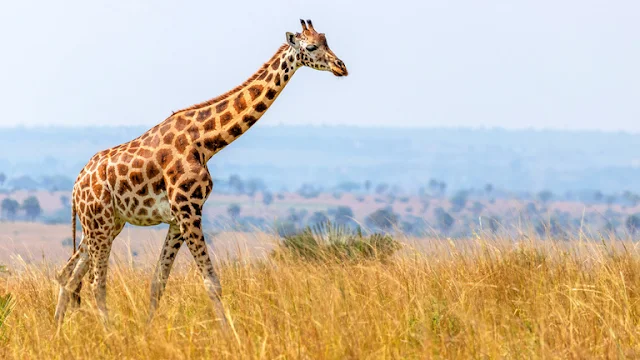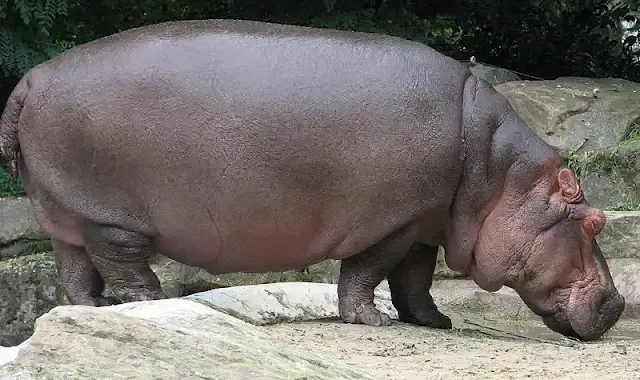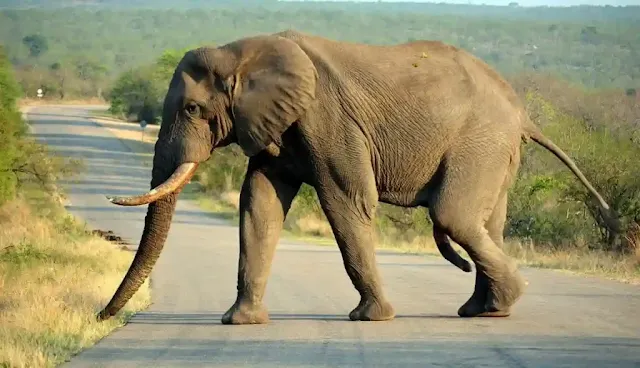Our planet is inhabited by a wide variety of organisms, from single-celled organisms to “nature’s crown” intelligent beings; from tiny organisms to multi-ton giants, some of which are extinct. But some large species have survived, and we recommend learning about the top 10 biggest animals in the world today.
Let’s Take a Look at our List of Top 10 Biggest Animals in The World
10. Python
Python is the 10th biggest animal in the world. According to official statistics, the largest individual is a female with a weight of 97.5 kg and a length of 5.21 meters. However, unconfirmed sources offer an even more impressive figure – describing encounters with pythons over 8 and 11 meters long. There is also a very untrue description in the literature, about 18m, 24m.
Monty pythons that live in South America prefer quiet rivers, quiet creeks, and remote, inaccessible places, so the populations of this species have not been studied. This snake needs water. It spends most of its life in water and occasionally climbs to land to bask in the sun. If a drought causes all water bodies in the county to dry up, the anaconda will hibernate in the river mud until the rainy season arrives.
There are many rumors about pythons eating people, but the opposite is true. 3354 Aborigines like to eat pythons. The only confirmed case of human ingestion was a 13-year-old boy. Snakes will not prey on humans unless they are attacking in self-defense.
9. Ostrich
No ranking would be complete without the largest bird on Earth, so the ostrich came ninth in the poll. The common myth that ostriches bury their heads in the sand when in danger is pure fiction. Nature gave them another superpower.
The flightless bird noticed the danger and ran away. The cows (a male, several females, and a calf) can not only run at speeds of up to 70 kilometers per hour but also make sharp turns without slowing down. Ostriches that hatch a month ago can run at a speed of 50 kilometers per hour, and adult ostriches can ‘run’ up to 4 meters. They feed on birds and plants, so they can get water from plants in the absence of water for long periods of time.
Alphas are real sultans with a harem of women and a “good wife” of alpha women. He pairs with her to help incubate the eggs (all females are in the same place). If several families of chickens hatch together and become friends, the parents will fight for custody of the offspring, as ostriches are inseparable and will hold each other tightly. Winners take good care of their own and others’ pups.
8. Polar Bear
Polar bears are 3 meters long (average 2-2.5 meters) and weigh from 500 kilograms to 1 ton. It has black skin and clear hair with no pigmentation. There are gaps in the hair. If exposed to sunlight for a long time, the wool will turn yellow. If the animal stays in the water for a long time in a warm environment, the wool turns green (algae begins to grow). The tongue is blue. Polar bears spend most of their time in the water, and they can spend an hour.
Swim at a speed of 10 kilometers per hour. They won’t get soaked because the closed hair is covered with an extra moisture barrier.
People are used to thinking of the Umka as a beautiful and lovely animal, but even experienced hunters fear it in anger. Besides them, bears have another enemy – melting glaciers, so their number is decreasing every year.
7. Saltwater Crocodile
The animal is capable of killing large members of other species, and examples of males attacking sharks and big cats have been mentioned. The bite force of a medium-sized crocodile is if studies are to be believed, equivalent to 1600 kg; some studies of animals weighing about a ton show over 3000 kg.
This predator has many names, one of which is an ogre. Unlike the unjustly maligned anaconda, the ridge crocodile does indeed take humans as prey. Even the aggressive hunting of this species has failed to deter predators – it is not afraid of humans, and the aggression and force of its bite make it almost impossible to survive an attack. Conservation officials captured the “cannibals” and removed them away from humans, but many returned to their habitats.
6. Giraffe
These graceful spotted animals have something in common with camels – their ability to survive for long periods of time without water. But that’s because they get the moisture they need from food. Most people once thought of giraffes as slow, lumbering creatures that thoughtfully chewed tree crowns, but they can easily outpace horses at speeds of up to 55 kilometers per hour. Spotted skin also has its own characteristics – its patterns are as unique as human fingerprints.
Giraffes sleep standing up, 10 minutes at a time. When they are not sleeping, which is between 16 and 20 hours a day, the animals are eating. Good eyesight helps giraffes see their own kind from a kilometer away, while good hearing and sense of smell enable them to detect danger in time.
5. Hippopotamus
The facts about hippopotamuses are amazing: they can hear and make sounds both on the surface and underwater, are born in water, can hold their breath for up to 5 minutes thanks to their powerful lungs, have a mouth opening of 120 cm, and a bite force of more than 200 Kilogram. An adult hippo can easily eat a 3-meter-tall crocodile.
Mastodons have less bloodlust. For example, when you’re exposed to the sun for a long time, your skin turns red — and you secrete a special protective substance to prevent sunburn. Hippos die from tooth loss and are unable to forage.
4. White Rhino
Oddly enough, the rhino’s skin wasn’t white at all but gray. It is believed that the locals refer to it as a word very similar to English White. Instead of figuring out what the word they heard really meant, Brits started using idiomatic white.
There are two subspecies of rhinos, northern and southern. The North is nearly extinct; in 2018, only two representatives remained globally. But through artificial insemination, scientists hope to preserve a subspecies. The southern subspecies were declared extinct in the late 19th century, but this conclusion proved premature. In an area of South Africa that is inaccessible to humans, enhanced protection has allowed the species to survive to the point where it has reached extinction today.
3. Savanna Elephant
Despite their impressive weight, elephants can reach speeds of up to 40 kilometers per hour. The emitted sound further “works” on infrasound frequencies, facilitating the exchange of information up to 10 kilometers away. But the most interesting ones are the ears. But not their size (1.5 meters), but the network of veins on their surface. Each rep has a unique pattern of veins, much like a human fingerprint.
Elephant herds consist of ten heads (sometimes more or fewer), led by an experienced old matriarch. She takes them to their new pasture, feeds them, and bathes them. Males are expelled from the group after reaching puberty and becoming single. Elephants set another record – their longest pregnancy – 22 months.
2. Sperm Whale
In addition to its outstanding size (20 meters in length for males and 15 meters for females), it has also set other equally astonishing records. These animals can dive to a depth of 2000 meters, some sources put this figure at 3000 and 4000 meters. There have been instances of sperm whales becoming entangled in cables laid at depths of 2,200 meters. Sperm whales are able to stay at deeper depths and conduct private dives for about two hours thanks to the fat and fluid being slightly squeezed under high pressure, as well as the ability to close their lungs and use the air pockets and oxygen supply in their muscles.
These mammals are smart enough to be a curse to long-line fishermen. They learned the great art of taking fish off the longlines, leaving people without a portion of their catch. To find prey and communicate, sperm whales, like other whales, use echolocation.
1. Blue Whale
Among the largest selections of animals, the blue whale or baleen whale emerges as the undisputed leader. It is not only the largest aquatic animal but also the largest or biggest animal in the world among modern animals. Scientists even think it’s the largest mammal on Earth.
Its body is 33 meters long and weighs 150 tons. If compared to familiar objects, the baleen whale is more than two busses long, with a heart the size of a midsize passenger car and a tongue about the weight of an African elephant. Its lifespan is just as impressive, though it hasn’t been fully determined how long it lived, initial estimates put it at an average of 90 years.
Like other cetaceans, baleen whales feed on plankton – the world’s largest animals eat crayfish up to 6 cm in size. For a long time, blue whales have been on the brink of extinction due to heavy whaling, especially considering that females give birth to calves every 2 years. But now the threat is over, blue whales have no natural predators other than killer whales, which pose a threat to their calves.
Its body is 33 meters long and weighs 150 tons. If compared to familiar objects, the baleen whale is more than two busses long, with a heart the size of a midsize passenger car and a tongue about the weight of an African elephant. Its lifespan is just as impressive, though it hasn’t been fully determined how long it lived, initial estimates put it at an average of 90 years.
Like other cetaceans, baleen whales feed on plankton – the world’s largest animals eat crayfish up to 6 cm in size. For a long time, blue whales have been on the brink of extinction due to heavy whaling, especially considering that females give birth to calves every 2 years. But now the threat is over, blue whales have no natural predators other than killer whales, which pose a threat to their calves.
Images Source is Google.
FAQS
What are the top 10 biggest animal in the world?
Here is a list of the top 10 biggest animals in the world10. Python According to official statistics, the largest individual is a female with a weight of 97.5 kg and a length of 5.21 meters.
9. Ostrich that hatch a month ago can run at a speed of 50 kilometers per hour, and adult ostriches can ‘run’ up to 4 meters.
8. Polar Bear are 3 meters long (average 2-2.5 meters) and weigh from 500 kilograms to 1 ton.
7. Saltwater Crocodile grow to 5 meters or more, with cases of 7 meters.
6. Giraffe Weighing in at around a ton.Males are 6 meters tall.
5. Hippopotamus which only live in Africa and weigh about 4 tons.
4. White Rhino Its weight ranges from 2 to 4 tons, and some individuals may weigh as much as 5 tons.
9. Ostrich that hatch a month ago can run at a speed of 50 kilometers per hour, and adult ostriches can ‘run’ up to 4 meters.
8. Polar Bear are 3 meters long (average 2-2.5 meters) and weigh from 500 kilograms to 1 ton.
7. Saltwater Crocodile grow to 5 meters or more, with cases of 7 meters.
6. Giraffe Weighing in at around a ton.Males are 6 meters tall.
5. Hippopotamus which only live in Africa and weigh about 4 tons.
4. White Rhino Its weight ranges from 2 to 4 tons, and some individuals may weigh as much as 5 tons.
3. Savanna Elephant There is a male weighing 12.2 tons in the Guinness Book of World Records
2. Sperm Whale Its size 20 meters in length for males and 15 meters for females.
1. Blue Whale Its body is 33 meters long and weighs 150 tons.
2. Sperm Whale Its size 20 meters in length for males and 15 meters for females.
1. Blue Whale Its body is 33 meters long and weighs 150 tons.
What is the 2nd largest animal in the world?
The second is the only member of the sperm whale family, the sperm whale, which is recognized by its large, oblong head, which is unusual among species in water.
What's the biggest sea monster?
Blue Whale Its body is 33 meters long and weighs 150 tons.
















.png)
